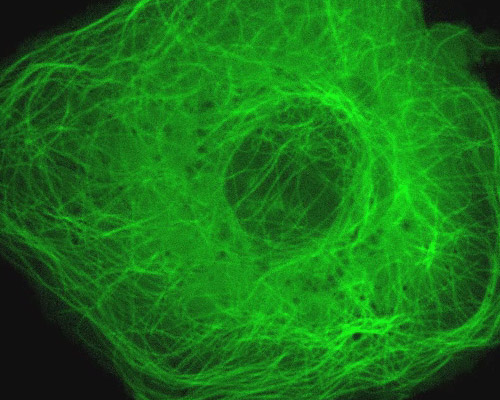Human Osteosarcoma with mEmerald-Tubulin-18

The protein tubulin polymerizes into filaments that form microtubules - hollow fibers that are the skeletal system for living cells. Microtubules can shift through various formations, which is what enables a cell to experience mitosis or to regulate intracellular transport. The flexibility of tubulin makes the transformation of microtubules possible, which is why scientists have tried to understand the protein's atomic structure since its discovery in the 1950s. The intracellular microtubule network was fluorescently tagged in the featured human osteosarcoma cells (U-2 line) with mEmerald fused to tubulin.
The green fluorescent protein mEmerald is a variant of EGFP, an enhanced derivative of Aequorea GFP. Both the brightness and photostability of mEmerald, which contains four additional mutations, are greater than that of EGFP. Excitation and emission of maxima of mEmerald occur at 487 and 509 nanometers, respectively.



